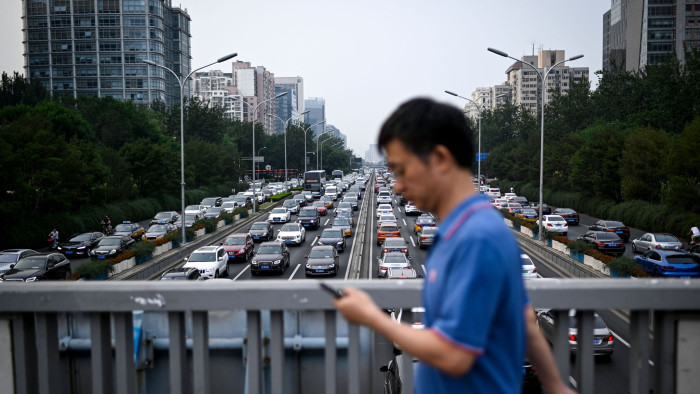Congestion charging gains ground as cities run out of road

Roula Khalaf, Editor of the FT, selects her favourite stories in this weekly newsletter.
Beijing resident Zhang Yong considers himself lucky. In 2011, the Chinese capital introduced a lottery-style system for the allocation of licence plates that allows winners the right to buy a car.
The aim was to curb the purchase of new vehicles and ease choking traffic in the congested city. Mr Zhang applied that February and won the following month. Today, there are 3.3m applicants for such plates and 6,300 monthly winners — a success rate of 0.2 per cent.
Congestion costs hundreds of hours per capita each year for the world’s worst affected cities, of which, Moscow, Istanbul and Bogotá take the top spots, according to the Inrix 2018 global traffic scorecard, an annual analysis of metropolitan congestion.
As cities of the future expand due to urbanisation, the need for more efficient transit and spatial management — including measures to cut road congestion — will also grow.
A study by Energy Policy, an academic journal, found that licence plate schemes “cannot decrease the number of vehicles on the road, but merely slow the growth of these vehicles”. Mr Zhang believes that Beijing’s licence plate policy “can no longer relieve traffic jams. I think [authorities] should collect a fee.”

Congestion pricing is well-established in cities including London, Stockholm and Singapore, with New York poised to join the list in 2021.
“We are moving towards cities that emphasise pedestrians, cyclists and public transportation,” says Jonas Eliasson, director of transport access at the Swedish National Transportation Administration. “Congestion pricing has helped make this shift away from car-oriented urban planning.”
Michael Manville, from the Luskin School of Public Affairs at University of California, Los Angeles, says roads are essentially a utility, like water or gas. “Congestion is a shortage of road: there is more demand for road space than there is space available,” he says. “The big difference between road networks and other utilities is that we don’t meter for use. Consequently, the roads are the only type of infrastructure that suffer from regular shortages.”
The premise behind congestion pricing is that roads are underpriced, and charging drivers prompts them to make fewer trips or take public transport.
In Stockholm, the city’s topography has thrown up a number of choke points along its main bridges. Since the introduction of congestion pricing in 2006, studies show that the Swedish capital has kept traffic 20 per cent below 2005 levels, even as its population increased.
“If you’re able to reduce the number of vehicles by 20 per cent . . . [that] might lead to a 40 per cent reduction of queueing time,” says Prof Eliasson. This is because vehicles can travel at a given speed until the road reaches its critical capacity. At a certain point, additional cars cause “a disproportionate amount of the delay”, Prof Eliasson explains. Therefore, congestion pricing needs only be high enough to deter a few would-be drivers, he says.
Charges to drive in congestion zone range from £11.50 in London to SEK9-SEK35 ($1-$3.70) in Stockholm. No fee schedule has been decided for New York, but estimates are $11-$14 for cars and $25 for trucks. In part due to this uncertainty, New York congestion pricing has its critics, including transport companies and business groups which fear it could negatively impact trading.
While not against the policy, Kendra Hems, president of the Trucking Association of New York, says: “If individuals and companies are ordering goods, we have to deliver them. There’s no choice but to enter the pricing zone. You cannot put freight on a subway car. It has to come in by truck.”
Ms Hems is also worried that without concessions, such as discounts, congestion pricing will harm New York’s small businesses. However, neither Transport for London nor the City of Stockholm Traffic Administration have observed a direct negative impact to their retail sectors as a result of congestion pricing, although both acknowledge that these effects are difficult to measure.
The number of Stockholm residents who supported congestion pricing rose from 43 per cent in 2004 to 72 per cent in 2013, with “roughly half of disappearing traffic switching to public transportation”, says Prof Eliasson.
Prof Manville says: “Our inability to tame congestion has made our cities less than the sum of their parts, because people think it’s going to be too stressful to go places. Americans just drive more than they need to . . . as there are fewer or no direct costs associated with driving on our roads.”

Comments